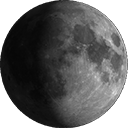Q: You make a lot of videos using small Maksutov telescopes. Is a Mak a good first scope for Astrophotography?
 A: The short answer is no. On my YouTube channel I like to show that you can take any scope out of its comfort zone/niche and get good results. This is in part as a challenge for me but also to show that you (and I!) should resist the urge to keep buying new kit until we’ve got the best from our existing setup. You’ll learn more that way and be better able to apply these skills with your next scope. The fact that Maksutovs feature a lot on my channel is because they are robust, cheap and capable small scopes, a mile away from some of the unstable, fragile and overly fiddly “junk” offerings often foisted on new astronomers. Maks are awesome visual scopes for planets, globular clusters and the moon, and can get you out under dark skies with an affordable basic mount. But if you are looking to buy a first scope with photography in mind, I’d say look elsewhere.
A: The short answer is no. On my YouTube channel I like to show that you can take any scope out of its comfort zone/niche and get good results. This is in part as a challenge for me but also to show that you (and I!) should resist the urge to keep buying new kit until we’ve got the best from our existing setup. You’ll learn more that way and be better able to apply these skills with your next scope. The fact that Maksutovs feature a lot on my channel is because they are robust, cheap and capable small scopes, a mile away from some of the unstable, fragile and overly fiddly “junk” offerings often foisted on new astronomers. Maks are awesome visual scopes for planets, globular clusters and the moon, and can get you out under dark skies with an affordable basic mount. But if you are looking to buy a first scope with photography in mind, I’d say look elsewhere.
Why? Starting with a Mak with the intention of doing Astrophotography (AP) is like choosing to make your life difficult and frustrating. The plus points are that the high powers of a Mak can deliver great shots of the moon and planets (with practice -no AP is easy), and if you have an equatorial mount then Deep Sky Object (DSO) photography of small, bright-ish objects is possible, as shown in my C90 Deep Sky AP video.


BUT photographing larger, fainter objects is not going to work well.
Any AP with a Mak will be challenging for a newcomer as the small, high magnification field means you need to be precise with aligning your mount.
If you can nail the alignment then finding most DSOs with a “slow” (long focal ratio) scope can also be difficult, unless you have GOTO.
Honestly it’s a world of pain as an entry point to astrophotography, in my opinion. And I’m a fan of Maks.
So what route should you take? If you want to buy a scope and get into DSO photography, I would look to buy a small “apo/ED” refractor like the Skywatcher Evostar 72ED Pro, and combine it with a lightweight but capable equatorial mount like a Skywatcher Star Adventurer mount. This setup will cost a little more than a Mak and Alt-Azimuth (AZ) mount but you will get results. Try and strike a deal by buying the kit as a package.
See the difference in the fields of view. The refractor will make target location a lot easier, it will capture the image faster, and the smaller image scale can easily be managed with a modern DSLR’s 10+ million pixels. Cropping the central part of the frame is simple.
There are competing brands offering similar scopes, so do your research by reading online reviews and forums. Don’t be tempted to go much larger in aperture (80mm tops). But with this light and relatively affordable rig you will also be using a setup common to “grab and go” astrophotographers the world over.
So whilst I love a Maksutov telescope, don’t make it your first choice if you want to dabble in astrophotography, unless your interest is limited to the planets.





